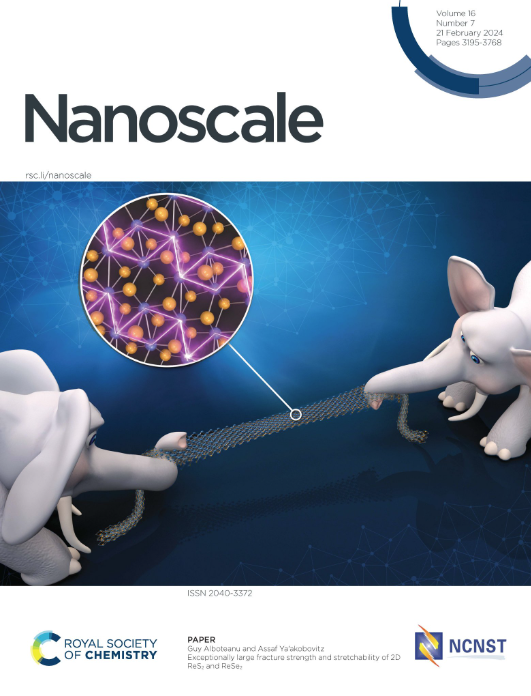An engineered platform to study the influence of extracellular matrix nanotopography on cell ultrastructure
IF 5.8
3区 材料科学
Q1 CHEMISTRY, MULTIDISCIPLINARY
引用次数: 0
Abstract
Nanoscale fabrication techniques have played an essential role in revealing the importance of extracellular matrix (ECM) nanotopography on cellular behavior. However, the mechanisms by which nanotopographical cues from the ECM influence cellular function remain unclear. To approach these questions, we have engineered a novel class of nanopatterned ECM constructs suitable for cryogenic electron tomography (cryo-ET), the highest resolution modality for imaging frozen hydrated cells in 3D. We electrospun aligned and randomly oriented ECM fibers directly onto transmission electron microscopy (TEM) supports to generate fibrous scaffolds that mimic physiological ECM in healthy (organized ECM) and diseased (disorganized ECM) states. We produced fibers from gelatin without toxic additives and crosslinked them to maintain structural stability in aqueous environments. The electrospun fibers had an average fiber diameter of hundreds of nanometers. We confirmed that the TEM supports can serve as viable cell culture substrates that can influence cell organization and demonstrated their compatibility with plunge freezing and cryo-ET. By enabling nanoscale structural analysis inside cells on substrates with programmable topographies, this platform can be used to study the physical cues necessary for healthy endothelial tissue formation and pathologies that are linked to endothelial dysfunction in diseases such as peripheral arterial disease.研究细胞外基质纳米形貌对细胞超微结构影响的工程平台
纳米制造技术在揭示细胞外基质(ECM)纳米形貌对细胞行为的重要性方面发挥了重要作用。然而,来自ECM的纳米形貌信号影响细胞功能的机制尚不清楚。为了解决这些问题,我们设计了一种新型的纳米模式ECM结构,适用于低温电子断层扫描(cryo-ET),这是冷冻水合细胞三维成像的最高分辨率模式。我们直接在透射电子显微镜(TEM)支架上静电纺丝排列和随机定向的ECM纤维,以产生纤维支架,模拟健康(有组织的ECM)和病变(无组织的ECM)状态下的生理ECM。我们用明胶生产了不含有毒添加剂的纤维,并通过交联使其在水环境中保持结构稳定性。静电纺纤维的平均纤维直径为数百纳米。我们证实了TEM支架可以作为影响细胞组织的活细胞培养基质,并证明了它们与低温冷冻和低温et的兼容性。通过在具有可编程地形的基质上对细胞内部进行纳米级结构分析,该平台可用于研究健康内皮组织形成所需的物理线索,以及与外周动脉疾病等疾病中内皮功能障碍相关的病理。
本文章由计算机程序翻译,如有差异,请以英文原文为准。
求助全文
约1分钟内获得全文
求助全文
来源期刊

Nanoscale
CHEMISTRY, MULTIDISCIPLINARY-NANOSCIENCE & NANOTECHNOLOGY
CiteScore
12.10
自引率
3.00%
发文量
1628
审稿时长
1.6 months
期刊介绍:
Nanoscale is a high-impact international journal, publishing high-quality research across nanoscience and nanotechnology. Nanoscale publishes a full mix of research articles on experimental and theoretical work, including reviews, communications, and full papers.Highly interdisciplinary, this journal appeals to scientists, researchers and professionals interested in nanoscience and nanotechnology, quantum materials and quantum technology, including the areas of physics, chemistry, biology, medicine, materials, energy/environment, information technology, detection science, healthcare and drug discovery, and electronics.
 求助内容:
求助内容: 应助结果提醒方式:
应助结果提醒方式:


